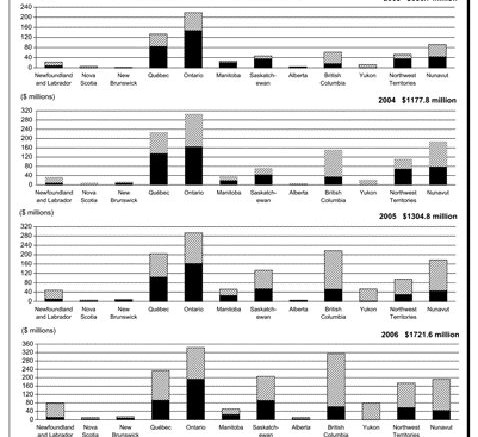Drilling to the east of a historic copper-lead-zinc deposit on its Seneca property, in B.C., has provided some encouraging results for Vancouver-based Carat Exploration (CRZ-V).
The company has received all assays from its 2006-07 drill program, which totalled 2,879 metres in 10 holes. Highlights include the following:
* in hole WL06-04, 2.3 metres (from 97.9 metres down-hole) averaging 3.5% copper and 0.3% zinc, including a 1.5-metre interval grading 5.3% copper, 0.41% zinc and 24.8 grams silver per tonne;
* in hole WL06-05, 9 metres (from 6.4 metres) averaging 0.77% zinc and 6.9 metres (from 217 metres) grading 1.59% zinc;
* 4 metres (from 10 metres) averaging 0.69% zinc in hole WL06-06;
* in hole WL06-07, 1.8 metres (from 38.6 metres) grading 1.1% copper, and 2 metres (from 210 metres) grading 2.89% zinc; and
* 11.7 metres (from 195 metres) averaging 0.56% zinc in hole WL06-08.
The Seneca property is situated 120 km east of Vancouver and overlies the historic Seneca deposit, which has a historical estimate of 1.5 million tonnes grading 3.57% zinc, 0.63% copper, 0.15% lead, 41.1 grams per tonne silver and 0.8 gram gold. Those numbers come from a non-National Instrument 43-101-compliant, unpublished report by Wright Engineers in 1984.
Carat describes the deposit as a polymetallic copper-lead-zinc-silver massive sulphide body hosted within mid-Jurassic volcanic rocks.
The company moved its drill program several kilometres east of Seneca after drilling that deposit in its 2005 program. The area its most recent program focused on is called Weaver Lake.
Carat says the area hadn’t been explored in the past, but that its initial work showed potential for massive sulphide mineralization.
It made that assessment after stream-sediment sampling in 2005 showed what it describes as “a strong and extensive polymetallic geochemical anomaly north of Weaver Lake, in the southeastern portion of the Seneca property.”
Drilling tested the anomaly and is being interpreted by Carat as altered zones that are possible “pathfinders” to overlying massive sulphides. The company says drill results are consistent with a hydrothermal feeder zone to a potential volcanic-hosted massive sulphide deposit.
The hydrothermal alteration and associated stringers are in a package of andesitic and dacitic volcanic rocks and interlayered sedimentary rocks.
The company says the stringer zones are predominantly made up of pyrite and chalcopyrite (copper sulphide) but locally contain notable amounts of sphalerite (zinc sulphide).
The geological units hosting the alteration are similar to those hosting massive sulphide mineralization at Seneca.
The company reported no significant mineral intercepts from holes WL06-03, WL06-09 and WL06-10.
Carat shares responded to the news by climbing nearly 12%, or 14, to $1.32 apiece on just 16,500 shares traded. The company has roughly 36 million shares outstanding.


Be the first to comment on "Carat getting clear picture of Seneca"